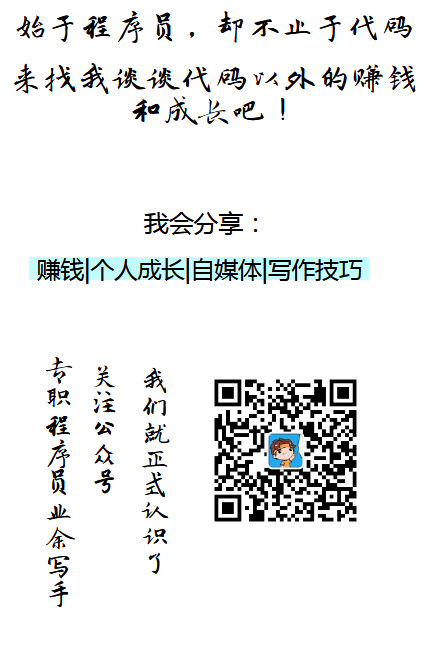Spring源码之九finishRefresh详解
公众号搜索【程序员田同学】,专职程序员兼业余写手,生活不止于写代码
Spring源码之一源码环境构建
Spring源码之二refresh()方法概览
Spring源码之三obtainFreshBeanFactory()方法
Spring源码之四prepareBeanFactory()方法
Spring源码之五BeanFactoryPostProcessor(后置处理器)
Spring源码之六-onRefresh()方法
Spring源码之七registerListeners()及发布订阅模式
Spring源码之八finishBeanFactoryInitialization方法即初始化单例bean
Spring IoC 的核心内容要收尾了,本文将对最后一个方法 finishRefresh 进行介绍,位于refresh 方法中的第九个位置。
本章实际是对发布订阅模式的一种补充,这是Spring在刷新事件完成后发布事件。
由于存在上下文关系,本文也会对 initApplicationEventMulticaster 方法、registerListeners 方法进行回顾。
我们回到refresh 方法中。
1 2 3 4 5 6 7 8 9 10 11 12 13 14 15 16 17 18 19 20 21 22 23 24 25 26 27 28 29 30 31 32 33 34 35 36 37 38 39 40 41 42 43 44 45 46 47 48 49 50 51 52 53 54 55 56 57 58 59 60 61 62 63 64 65 66 67 68 69 70 71 72 73 74 75 76 @Override() throws BeansException, IllegalStateException {Refresh() ;FreshBeanFactory() ;BeanFactory(beanFactory ) ;try {ProcessBeanFactory(beanFactory ) ;BeanFactoryPostProcessors(beanFactory ) ;BeanPostProcessors(beanFactory ) ;MessageSource() ;ApplicationEventMulticaster() ;Refresh() ;Listeners() ;BeanFactoryInitialization(beanFactory ) ;Refresh() ;if (logger.isWarnEnabled() ) {"Exception encountered during context initialization - " +"cancelling refresh attempt: " + ex);Beans() ;Refresh(ex ) ;CommonCaches() ;
我们首先知道这个三个方法的作用:
initApplicationEventMulticaster():初始化应用的事件广播器
1 2 3 4 5 6 7 8 9 10 11 12 13 14 15 16 17 18 19 20 21 22 23 24 25 26 ApplicationEventMulticaster() {BeanFactory() ;if (beanFactory.containsLocalBean(APPLICATION_EVENT_MULTICASTER_BEAN_NAME) ) {Bean(APPLICATION_EVENT_MULTICASTER_BEAN_NAME, ApplicationEventMulticaster.class ) ;if (logger.isTraceEnabled() ) {"Using ApplicationEventMulticaster [" + this.applicationEventMulticaster + "]" );else {new SimpleApplicationEventMulticaster(beanFactory ) ;Singleton(APPLICATION_EVENT_MULTICASTER_BEAN_NAME, this .applicationEventMulticaster ) ;if (logger.isTraceEnabled() ) {"No '" + APPLICATION_EVENT_MULTICASTER_BEAN_NAME + "' bean, using " +"[" + this.applicationEventMulticaster.getClass() .getSimpleName() + "]" );
最终只做了一件事,初始化应用的事件广播器。(具体什么是事件广播器及其作用可见上上篇文章,具体就不在吃赘述了)
registerListeners():注册监听器。见上上篇文章
finishRefresh():完成上下文的刷新工作,本文重点 。
首先概览finishRefresh方法
1 2 3 4 5 6 7 8 9 10 11 12 13 14 15 16 17 18 19 20 protected void finishRefresh () {clearResourceCaches ();initLifecycleProcessor ();getLifecycleProcessor ().onRefresh ();publishEvent (new ContextRefreshedEvent(this));.registerApplicationContext (this);
1、2、3是重点内容
1.为此上下文初始化生命周期处理器
1 2 3 4 5 6 7 8 9 10 11 12 13 14 15 16 17 18 19 20 21 22 23 protected void initLifecycleProcessor() {BeanFactory() ;if (beanFactory.containsLocalBean(LIFECYCLE_PROCESSOR_BEAN_NAME) ) {Bean(LIFECYCLE_PROCESSOR_BEAN_NAME, LifecycleProcessor.class ) ;if (logger.isTraceEnabled() ) {"Using LifecycleProcessor [" + this.lifecycleProcessor + "]" );else {new DefaultLifecycleProcessor() ;BeanFactory(beanFactory ) ;Singleton(LIFECYCLE_PROCESSOR_BEAN_NAME, this .lifecycleProcessor ) ;if (logger.isTraceEnabled() ) {"No '" + LIFECYCLE_PROCESSOR_BEAN_NAME + "' bean, using " +"[" + this.lifecycleProcessor.getClass() .getSimpleName() + "]" );
2.首先将刷新完毕事件传播到生命周期处理器
1 2 3 4 5 6 7 8 9 10 11 12 13 14 15 16 17 18 19 20 21 22 23 24 25 26 27 28 29 30 31 32 33 34 35 36 37 private void startBeans(boolean autoStartupOnly ) {LifecycleBeans() ;new HashMap<>() ;for Each((beanName , bean ) -> {if (!autoStartupOnly || (bean instanceof SmartLifecycle && ((SmartLifecycle) bean).isAutoStartup() )) {int phase = getPhase(bean ) ;if (group == null) {new LifecycleGroup(phase , this .timeoutPerShutdownPhase , lifecycleBeans , autoStartupOnly ) ;if (!phases.isEmpty() ) {new ArrayList<>(phases.keySet() );Collections .for (Integer key : keys) {() ;
3.推送上下文刷新完毕事件到相应的监听器
1 2 3 4 5 6 7 8 9 10 11 12 13 14 15 16 17 18 19 20 21 22 23 24 25 26 27 28 29 30 31 32 33 34 35 36 protected void publishEvent (Object event , @Nullable ResolvableType eventType )event , "Event must not be null" );if (event instanceof ApplicationEvent) {event ;else {new PayloadApplicationEvent<>(this , event );if (eventType == null ) {if (this .earlyApplicationEvents != null ) {this .earlyApplicationEvents.add (applicationEvent);else {if (this .parent != null ) {if (this .parent instanceof AbstractApplicationContext) {this .parent).publishEvent(event , eventType);else {this .parent.publishEvent(event );
这里面调用的publishEvent方法,和我们自定义的监听器调用的publishEvent是同一个方法,ContextRefreshedEvent是Spirng的一个事件称为上下文刷新完毕事件,如果我们在上下文刷新完成后要写一个发布事件,实现ApplicationListener接口即可。
我们在此举一个简单的例子。
这样,当 Spring 执行到 finishRefresh 方法时,就会将 ContextRefreshedEvent 事件推送到 MyRefreshedListener 中。
读者可以结合自定义事件对比一个和Spring提供的刷新上下文事件的区别,以便于更好的理解Spring的事件监听机制。
跟 ContextRefreshedEvent 相似的还有:ContextStartedEvent、ContextClosedEvent、ContextStoppedEvent。
好啦,Spirng的refresh方法到这里就结束啦,一共是九篇博客,实际上这也是Spirng的IOC的全部内容了,如果读者能把九篇的完全消化,那么spring的IOC也就理解的七七八八了。
安利时刻:


